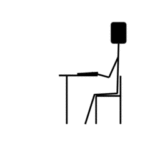半世紀前に打ち上げられたソビエト時代の宇宙船の残骸が大気圏に再突入する可能性があるという。
1972年に打ち上げられた、Kosmos 482という宇宙船。
今後、このような宇宙ゴミの再突入が繰り返されることになるだろう。
BBCより、
Soviet-era spacecraft ‘likely’ to have re-entered Earth’s atmosphere

日本語コメント
ソビエト時代の宇宙船が、半世紀を経て地球に帰ってくる――技術のロマンと老朽化の現実が交差する瞬間。
1972年に打ち上げられた**Kosmos 482(コスモス482)**が、大気圏に再突入する可能性があるというニュースは、まるでSFのような現実。
冷戦期の宇宙開発の残滓が、2025年の私たちの頭上をまだ周回しているという事実は、宇宙開発の歴史とその長期的な影響を改めて考えさせられます。
同型のVenera探査機は金星を目指していましたが、Kosmos 482は軌道投入に失敗し、地球周回軌道に半世紀もとどまり続けていたとのこと。
今回の再突入は制御不能で、どこに落ちるかは予測困難。ただし、多くの場合、落下物は大気圏で燃え尽きるため、地上へのリスクは極めて低いとされています。
とはいえ、「50年前の宇宙ゴミ」がまだ降ってくるというのは、今後の宇宙活動にも重要な教訓。
スペースデブリ(宇宙ゴミ)問題への対応や、長期にわたる軌道管理の必要性がますます重視されるべき時代に入っています。
English Comment
A Soviet spacecraft from 1972 may be re-entering Earth’s atmosphere—half a century later.
The Kosmos 482, launched during the height of the Cold War, was originally intended for a Venus mission. But after a failed orbital insertion, it became an unintended time capsule, silently orbiting Earth for more than 50 years.
Its potential re-entry this weekend is a stark reminder of how long-lasting the legacy of early space exploration can be—both in awe and in risk.
While most of the spacecraft is expected to burn up during descent, the idea that “1970s space junk” is still falling toward Earth today is both fascinating and cautionary.
This highlights the growing concern over space debris management. As we launch more satellites and missions, ensuring responsible end-of-life planning isn’t just good practice—it’s essential for the safety of future generations.



コメント